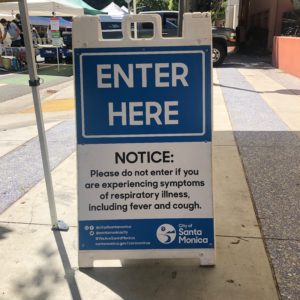
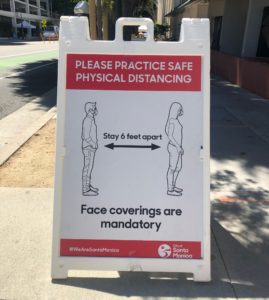
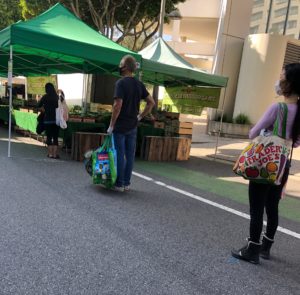
In The Before Times, a trip to the farmers’ market meant sampling delicious produce, hand-selecting your items, and catching up on all the news with farmers and fellow shoppers. Life is very different these days, including how we shop while keeping each other safe. Can farmers’ markets (and CSAs and farm stands) play an essential role in this new world? Absolutely.
My top four reasons why:
- The shortened supply chain of small-farmed foods means food passes through far fewer hands to get to us. During the early weeks, when supermarket shelves were empty, a shorter supply chain allowed local farmers to get food directly to consumers when traditional distribution methods struggled.
- Most farmers’ markets are held outdoors, with ample space for social distancing. As we have learned, fresh air is a key protective measure against COVID-19.
- Rigorous regulations to prevent the spread of infectious disease are already in place; markets and vendors were well-prepared to ramp up.
- Just-picked, farm-direct produce lasts longer at home, which means fewer shopping trips per month. Most farmers’ market (and CSA and farm stand) foods are harvested within a day or two of sale (see shortened supply chain).
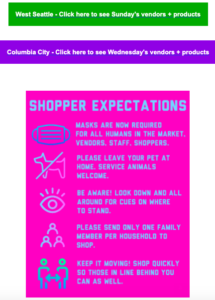

What you deserve:
Both sellers and buyers deserve to feel as safe as possible. Farmers’ markets across the country have implemented a variety of solutions. If your market is lacking in safe protocols, talk to the manager, reach out to market owners (typically, municipalities or non-profit organizations) to encourage safer practices. Or, shop at a different farmers’ market.
What to expect:
- Masks required for all humans.
- Social distancing. As with every other business these days, expect controlled entrances and exits. If you can, avoid going near opening or closing times to shorten your wait. Stalls have entry and exit points. Wait to be invited in.
- To lessen crowd density, markets have discontinued all non-essentials (cut flowers, prepared food, trinkets) by state or county mandate, at least for the time being.
- No-touch policy. A vendor will bag your selections; a separate worker will take your money. Just pretend you’re in Paris or Florence, where it’s always been like this.
- No sampling, and no food or drink consumption within the market.
- More contactless payment. Venmo, Apple Pay, credit cards, checks, exact change (in dollars, forget the pennies).
- Hand-washing stations
- Alternative shopping options: pre-order boxes of produce for curbside pick up at farmers’ markets or other hubs, such as restaurants and small grocers. Some farmers deliver!
Do your part:
- Follow the rules; come prepared.
- Protect the vendors. You will be at the market for a short time with little social contact; farmers are there for the whole day, having lots of contact with folks just like you. So, follow the rules!
- Protect your fellow shoppers. Keep your mask on; don’t touch your face. Sanitize, sanitize, sanitize.
- Stay home if you are sick…with anything.
- Hate to wait in line? Once you’re in, shop with purpose, minimize chatter, and get the heck out.
- Go alone, if possible, to keep numbers down.
- Be flexible. This has always been the way to shop in season, but now more than ever, adapt to what’s available. It’s all part of the quarantine kitchen.
- Follow your market and local farmers on social media. This is where fast-breaking changes to schedules and rules often first appear.
- Manage expectations. Feel gratitude instead of irritation. Pause to think what it took to get this food to market under these conditions. As if farming isn’t already challenging enough.
- Finally, if you’d like to see more than a landscape of big box stores when this is all over, support your local farmers and farmers’ markets.






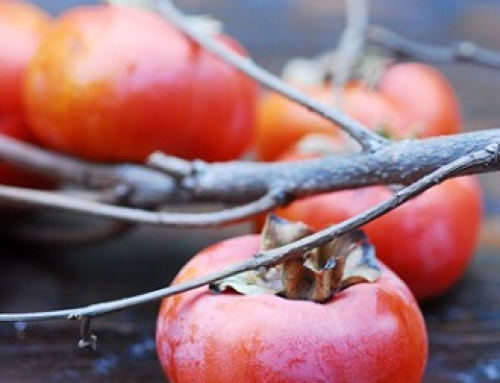
Leave A Comment